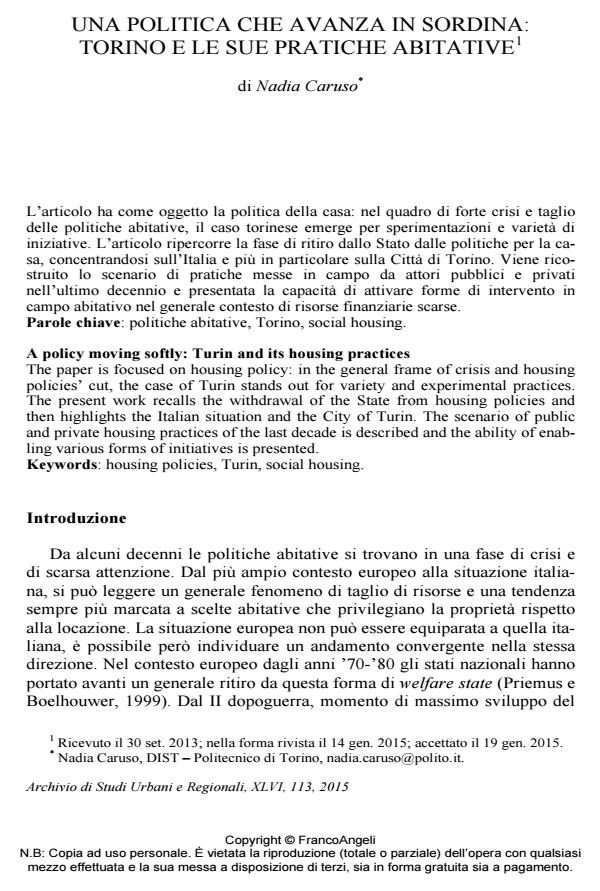A policy moving softly: Turin and its housing practices
Journal title ARCHIVIO DI STUDI URBANI E REGIONALI
Author/s Nadia Caruso
Publishing Year 2015 Issue 2015/113
Language Italian Pages 19 P. 84-102 File size 129 KB
DOI 10.3280/ASUR2015-113005
DOI is like a bar code for intellectual property: to have more infomation
click here
Below, you can see the article first page
If you want to buy this article in PDF format, you can do it, following the instructions to buy download credits

FrancoAngeli is member of Publishers International Linking Association, Inc (PILA), a not-for-profit association which run the CrossRef service enabling links to and from online scholarly content.
The paper is focused on housing policy: in the general frame of crisis and housing policies’ cut, the case of Turin stands out for variety and experimental practices. The present work recalls the withdrawal of the State from housing policies and then highlights the Italian situation and the City of Turin. The scenario of public and private housing practices of the last decade is described and the ability of enabling various forms of initiatives is presented.
Keywords: Housing policies, Turin, social housing
- Temporary housing in Turin: the Ma.Ri. House case study Nadia Caruso, Giulia Datola, in Valori e Valutazioni /2023 pp.107
DOI: 10.48264/VVSIEV-20233209
Nadia Caruso, Una politica che avanza in sordina: Torino e le sue pratiche abitative in "ARCHIVIO DI STUDI URBANI E REGIONALI" 113/2015, pp 84-102, DOI: 10.3280/ASUR2015-113005